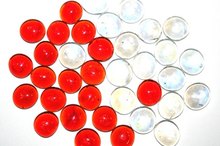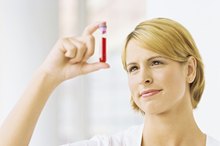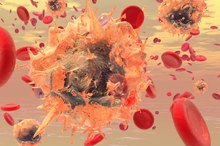What Is a CBC With Auto Diff Blood Test?
"CBC with auto diff" is an abbreviation for a laboratory test called a complete blood count with automated differential. The test consists of group of measurements and counts performed by laboratory instrument 2. The analysis is easy to perform and gives an abundance of information about your general state of health state. It is ordered by doctors for a variety of reasons and is one of the most common and useful laboratory tests 2.
If you are experiencing serious medical symptoms, seek emergency treatment immediately.
Testing Process
Blood to perform a CBC with auto diff is typically collected from an arm vein. The blood is taken to the lab and a small sample is placed into an automated instrument that performs a series of measurements. Results are usually available the same day but can be made available sooner, if needed.
Measurements
A High Number of Leukocytes
Learn More
A CBC with auto diff includes a panel of different blood tests performed simultaneously on a single analyzer. Red blood cells are counted and measured, along with the amount of oxygen-carrying hemoglobin within them. Counts are also done for the total number and subtypes of white blood cells, and small particles called platelets.
Red Cells
The analyzer counts the number of red blood cells and assesses their size, shape and hemoglobin content. These tests determine whether you are anemic, and help your doctor determine the underlying cause if you have the condition. For example, a low red blood cell count in combination with small red cell size may indicate iron deficiency. Red cells that are too large may signal anemia caused by a vitamin B12 or folate deficiency. Significantly decreased numbers of red blood cells that are otherwise normal may alert your doctor to recent bleeding.
- The analyzer counts the number of red blood cells and assesses their size, shape and hemoglobin content.
- Significantly decreased numbers of red blood cells that are otherwise normal may alert your doctor to recent bleeding.
White Cells
What Is a CBC With Auto Diff Blood Test?
Learn More
The total number of white cells in the blood are measured, and then the number and percentages of white cell subtypes are determined. A low white count may signal that the body is unable to fend off infection. A high white count may indicate an active infection, inflammatory condition, leukemia or lymphoma.
The number and relative percentages of the white cell subtypes may provide clues about specific conditions. With viral infections, the number and percentage of white cells called lymphocytes is often increased. Increased numbers of white cells called eosinophils may suggest a parasite infection or allergic reaction. Bacterial infections often cause high numbers of white cells called neutrophils.
- The total number of white cells in the blood are measured, and then the number and percentages of white cell subtypes are determined.
- Increased numbers of white cells called eosinophils may suggest a parasite infection or allergic reaction.
Platelets
Platelets are tiny cellular fragments that help seal cuts and stop bleeding. A CBC with auto diff includes a platelet count and assessment of platelet size. A low platelet count may put you at increased risk for bleeding, which is of particular concern if you are scheduled for surgery. People with an extremely low platelet count may bleed spontaneously. A low platelet count may occur because of reduced bone marrow production, exposure to certain toxins or medicines or a serious viral infection.
Detection of a high platelet count is important because it may increase your risk for forming blood clots that could trigger a heart attack or stroke. Overproduction of platelets by the bone marrow and certain types of anemia are the leading causes of a high platelet count.
- Platelets are tiny cellular fragments that help seal cuts and stop bleeding.
- Detection of a high platelet count is important because it may increase your risk for forming blood clots that could trigger a heart attack or stroke.
Related Articles
References
- Laboratory Test Handbook, 5th Edition; David S. Jacobs, M.D., et al.
- Clinical Diagnosis by Laboratory Methods, 19th Edition; John Bernard Henry, ed.
- Wintrobe's Clinical Hematology; John P. Greer, et al., eds.
- Auerbach M, Adamson JW. How we diagnose and treat iron deficiency anemia. Am J Hematol. 2016;91(1):31-38. doi:10.1002/ajh.24201
- Penn State Hersey. Milton S. Hersey Medical Center. CBC Blood Test. Updated October 24, 2018.
- Whitehead L. Managing Chemotherapy-Induced Anemia with Erythropoiesis-Stimulating Agents Plus Iron. Am J Nurs. 2017;117(5):67. doi:10.1097/01.NAJ.0000516277.58981.36
- Mohandas H, Jaganathan SK, Mani MP, Ayyar M, Rohini Thevi GV. Cancer-related fatigue treatment: An overview. J Cancer Res Ther. 2017;13(6):916-929. doi:10.4103/jcrt.JCRT_50_17
- Long B, Koyfman A. Oncologic Emergencies: The Fever With Too Few Neutrophils. J Emerg Med. 2019;57(5):689-700. doi:10.1016/j.jemermed.2019.08.009
- Bond TC, Szabo E, Gabriel S, et al. Meta-analysis and indirect treatment comparison of lipegfilgrastim with pegfilgrastim and filgrastim for the reduction of chemotherapy-induced neutropenia-related events. J Oncol Pharm Pract. 2018;24(6):412-423. doi:10.1177/1078155217714859
- National Heart, Lung, and Blood Institute. Thrombocytopenia. 2019.
- Kuter DJ. Managing thrombocytopenia associated with cancer chemotherapy. Oncology (Williston Park). 2015;29(4):282-294.
- Sunkesula VC, Knighton S, Zabarsky TF, Kundrapu S, Higgins PA, Donskey CJ. Four Moments for Patient Hand Hygiene: A Patient-Centered, Provider-Facilitated Model to Improve Patient Hand Hygiene. Infect Control Hosp Epidemiol. 2015;36(8):986-989. doi:10.1017/ice.2015.78
Resources
Writer Bio
Janna Smith has written health and fitness articles since 2000. She has co-authored papers in medical journals, including "Archives of Pathology and Laboratory Medicine." Smith is a practicing physician and Ironman triathlete. She received her medical degree from the University of Miami, and is board certified in anatomic and clinical pathology.









